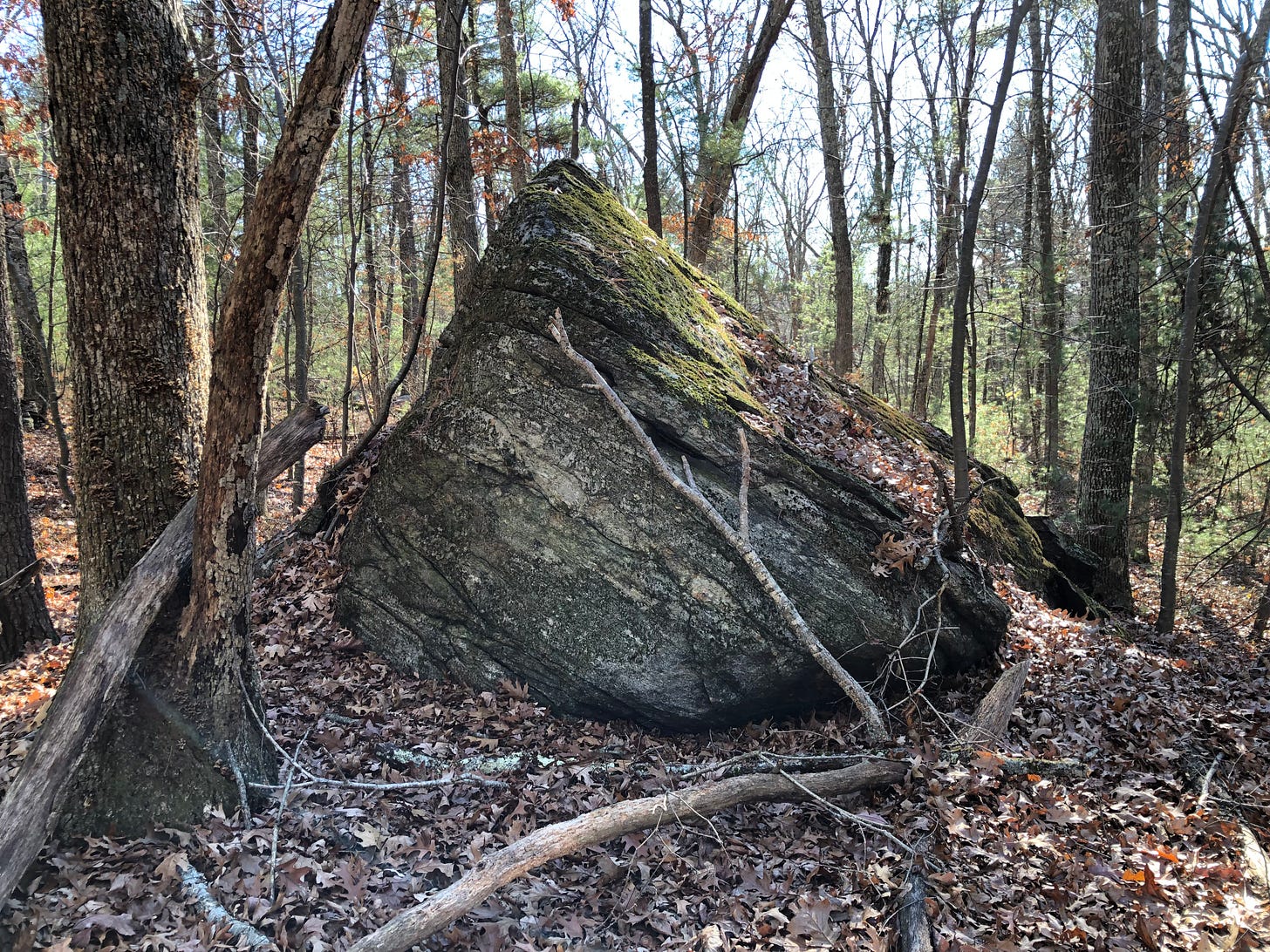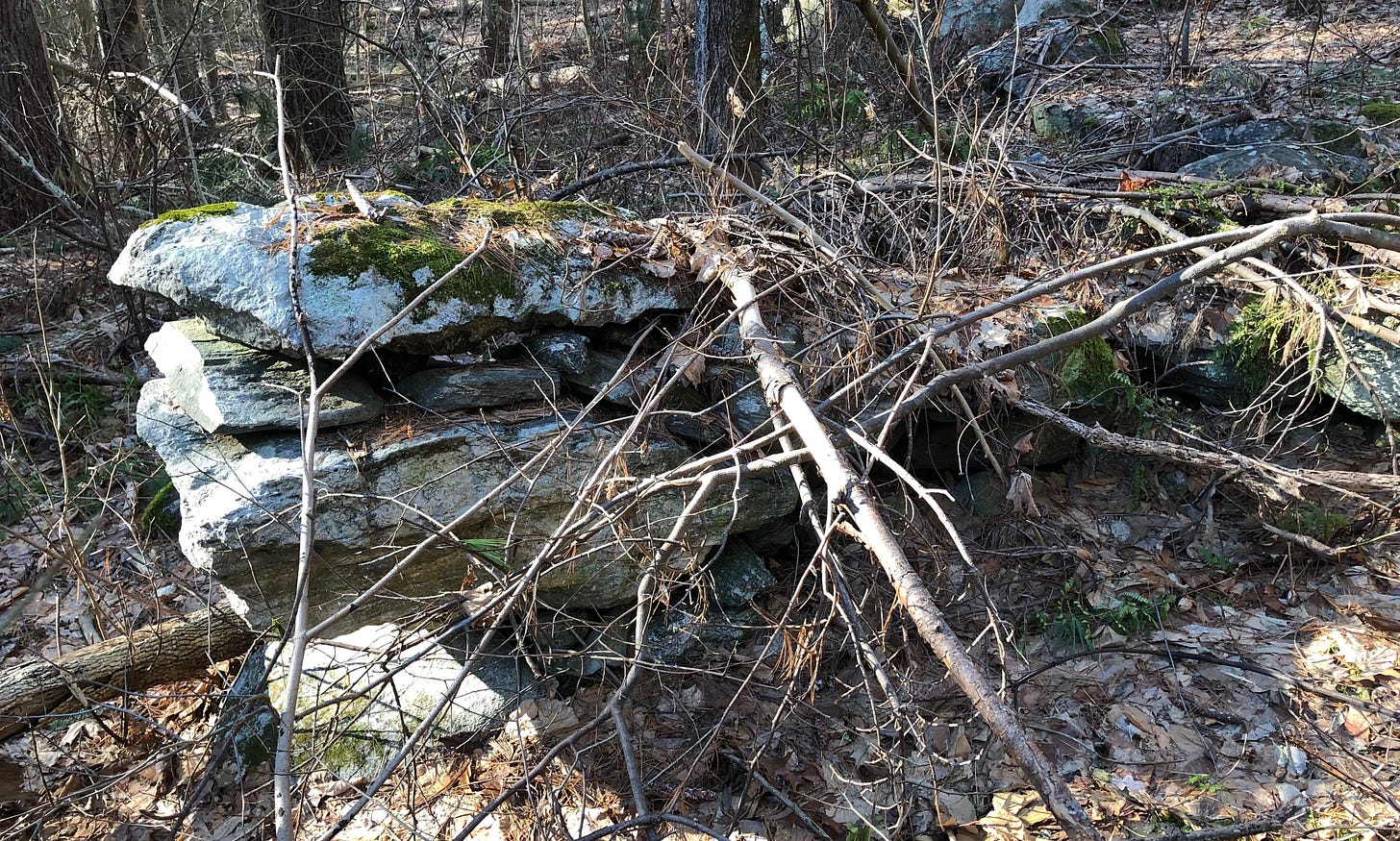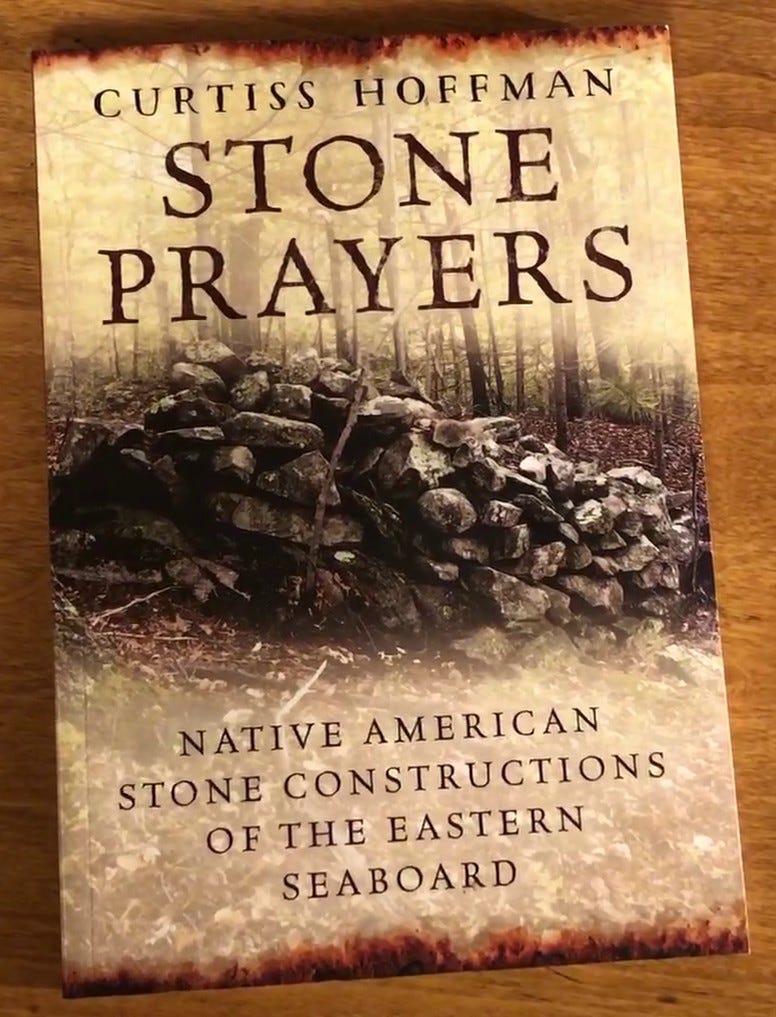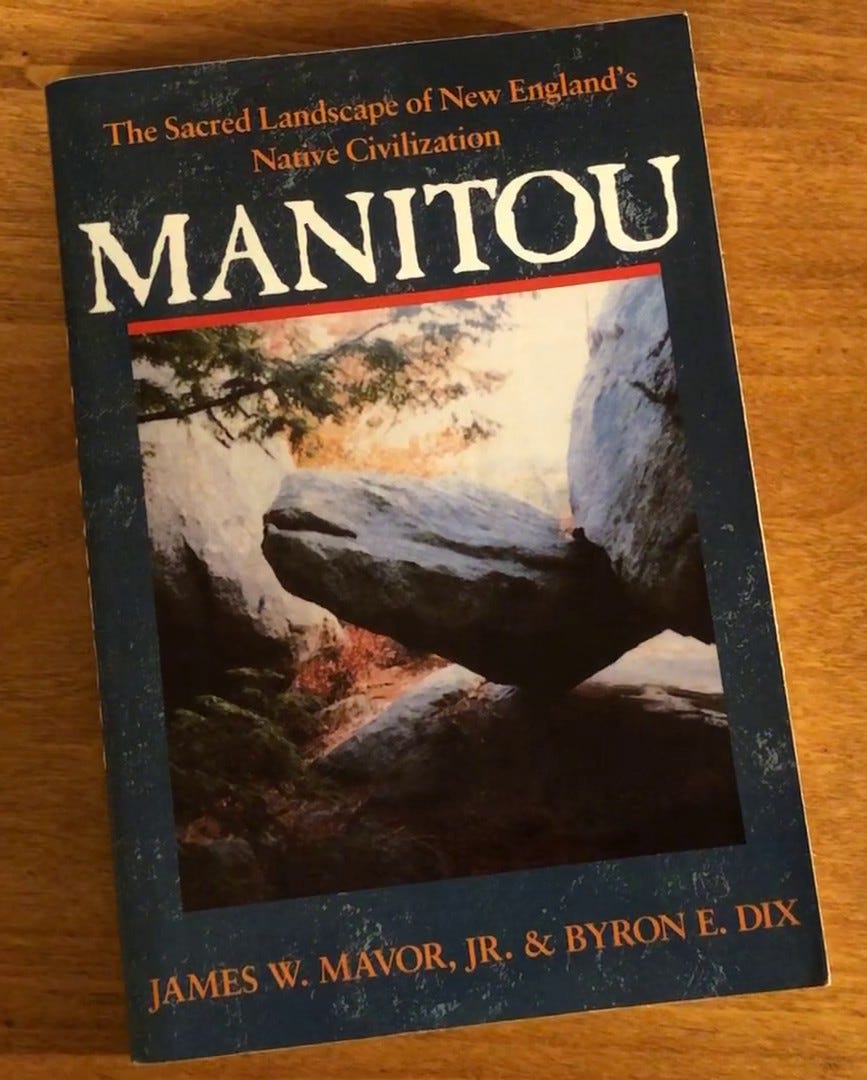Rediscovering Kequasagansett 2
Possible Sacred Stone and Water Works Around Gates Pond in Berlin, Massachusetts
Part Two: Sacred Stonework in the Northeast?
I wandered the area around the north end of Gates Pond in Berlin, Massachusetts looking for possible Indigenous stonework thanks to ten-year old blog entries I’d been reading. I’m following, in some cases, in the literal footsteps of folks who have been at this a lot longer than I have.
One of them is Peter Waksman, proprietor of the long-running Rock Piles blog (Here’s the first of few of his entries on Gates Pond and Sawyer Hill: http://rockpiles.blogspot.com/2011/03/sawyer-hill-gates-pond-berlin-ma.html).
I’d visited Gates Pond after Christmas, a year ago, after reading the Rock Piles entries but without consulting the maps on the blog too closely. I managed to make some new finds, not previously reported. But I didn’t see what had been reported.
This time, I looked at the map, but didn’t scan through the pictures, hoping to preserve some element of surprise and discovery, which sort of worked. When I looked at the blog again, after my visits, it confirmed that I saw a great deal of what was shared ten years ago, but I also came across more – for there is a great deal to be seen atop Sawyer Hill and down into the wetlands to its south. I spent five and a half hours over the course of two days checking out the stone and water works there.
There is developing recognition that Indigenous Peoples in the northeast of what’s now North America likely worked with stone – building ritual stone features, adapting the land around them, creating what have come to be known as Sacred Stone Landscapes or Ceremonial Stone Landscapes.
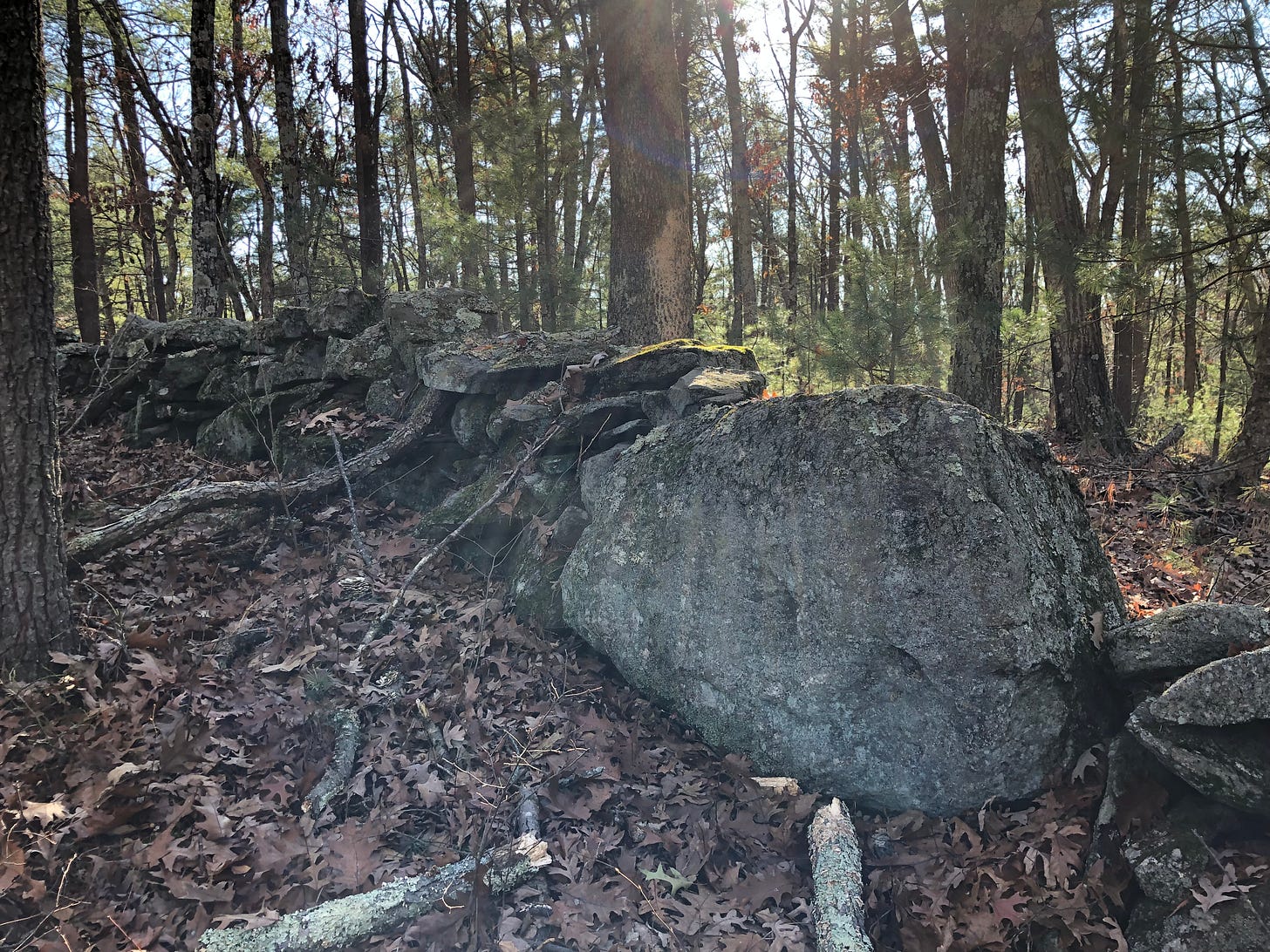
These constructs are all around us, but they haven’t been seen for what they truly are. The myth that this was a “New World” and a Pristine, Primitive Wilderness, and not the gardenlike, curated landscape trodden by millions of Indigenous Peoples over thousands of years it truly was, led to much of this early work being discounted or misattributed to settlers, farmers, or nature.
Some of what had been thought to be simply farmers’ “field clearing piles” and “stone walls” are now being reassessed in light of discoveries by archaeologists, antiquarians and other amateurs, and revelations from tribal representatives and elders. Much of the oldest of this work appears to be sacred stonework, often aligned with celestial objects and events.
Not all professionals are open to this concept. There remains a dogmatic belief among some archaeologists that all the stone workings of New England are Colonial. This undermines the field with an unscientific bias, a scientism which leads some archaeologists to disregard results in favor of dogmatic ideas.
Some of this arose in the 1970's, when the archaeological community pushed back hard against the theories of amateurs proposing stone chambers and other New England-area stone works were built by pre-Columbian European explorers, creating a circle-the-wagons mentality among archaeologists around the prevailing thought at the time, which, unfortunately, suffered from a racial bias against Indigenous Peoples' ability to work with stone.
While lecturing pre-Columbian theorists on their ignorance of 10,000 years of Indigenous Peoples’ habitation, the archaeologists themselves couldn't conceive of the possibility that Indigenous Peoples in the Northeast had anything to do with the stone works. All were deemed colonial constructs. It was simply a given for the archaeologists that Indigenous Peoples never worked in stone.
In his 2018 book Stone Prayers, Massachusetts anthropologist and archaeologist Dr. Curtiss Hoffman faults many of his colleagues for indulging in dogmatic scientism as they maintain this attitude, still. This view, he says, "developed without reference to the published literature and as far as I can tell solely based on an aversive reaction to the claims of both nonprofessional and tribal groups..."
Born out of backlash. It has no basis in fact, in other words.
Scientistic.
Scientism.
But not science.
It is refreshing a professional like Hoffman actively considers the mysteries of the origin of these stone works. Up until recently, avocational archaeologists, amateurs and researchers have done most of the legwork. In fact, Hoffman cites researchers James W Mavor Jr. and Byron E Dix for their groundbreaking work, as evidenced in their 1989 book Manitou, where they proposed that New England stone chambers, walls, and other workings could be of Indigenous Peoples’ origin, basing their theories on astronomical alignments they found in the stone works.
The work done by Mavor and Dix continues to influence new generations of archaeologists, amateurs, and researchers like myself. And though it’s now over 30 years old, because Manitou was of such groundbreaking significance, we’re still learning from the book, from ideas and concepts Mavor and Dix introduced, figured out, or tracked down. As I study the Stone and Water Works North of Gates Pond, I still turn to Manitou for ideas on what I might be seeing… and find possible answers.
Local histories provide many details of post-contact settlement and colonization. Manitou provides insight into what may have come before.
*****





